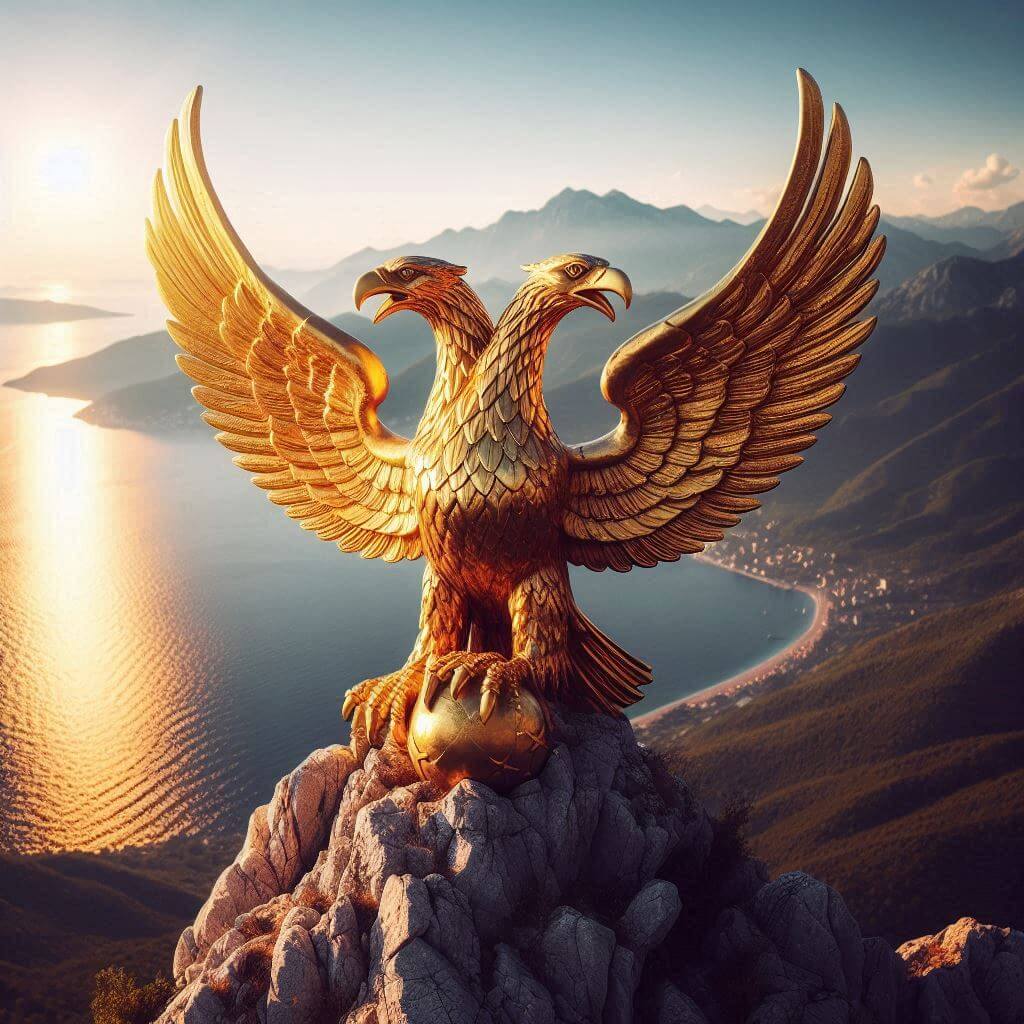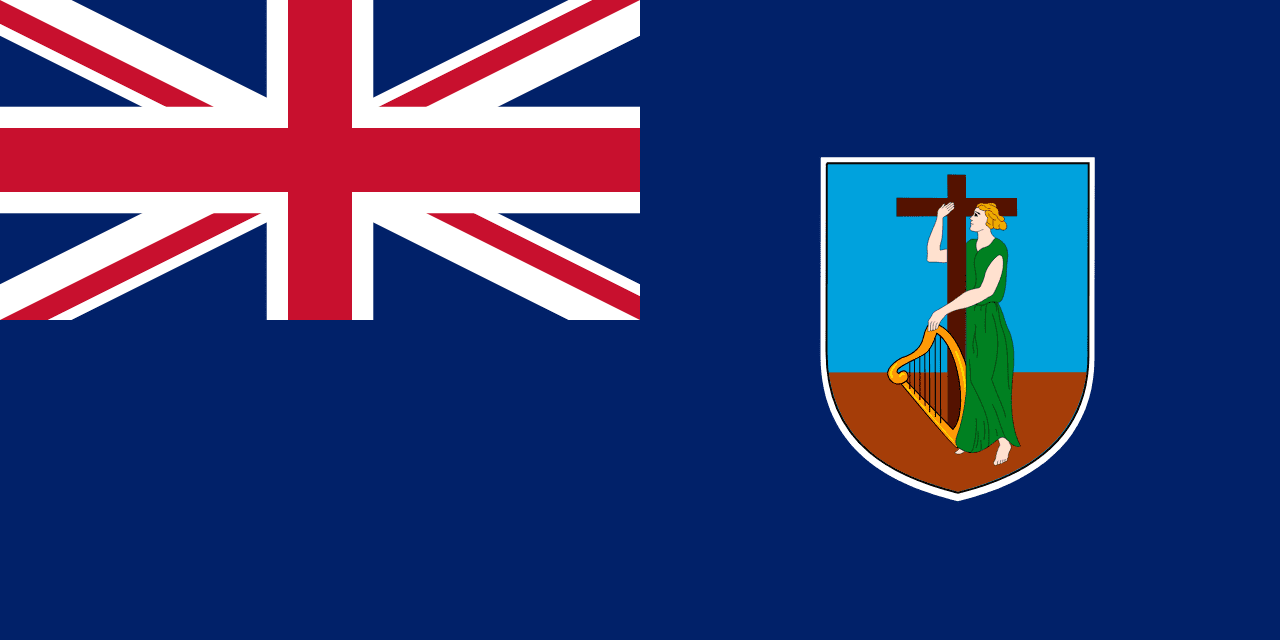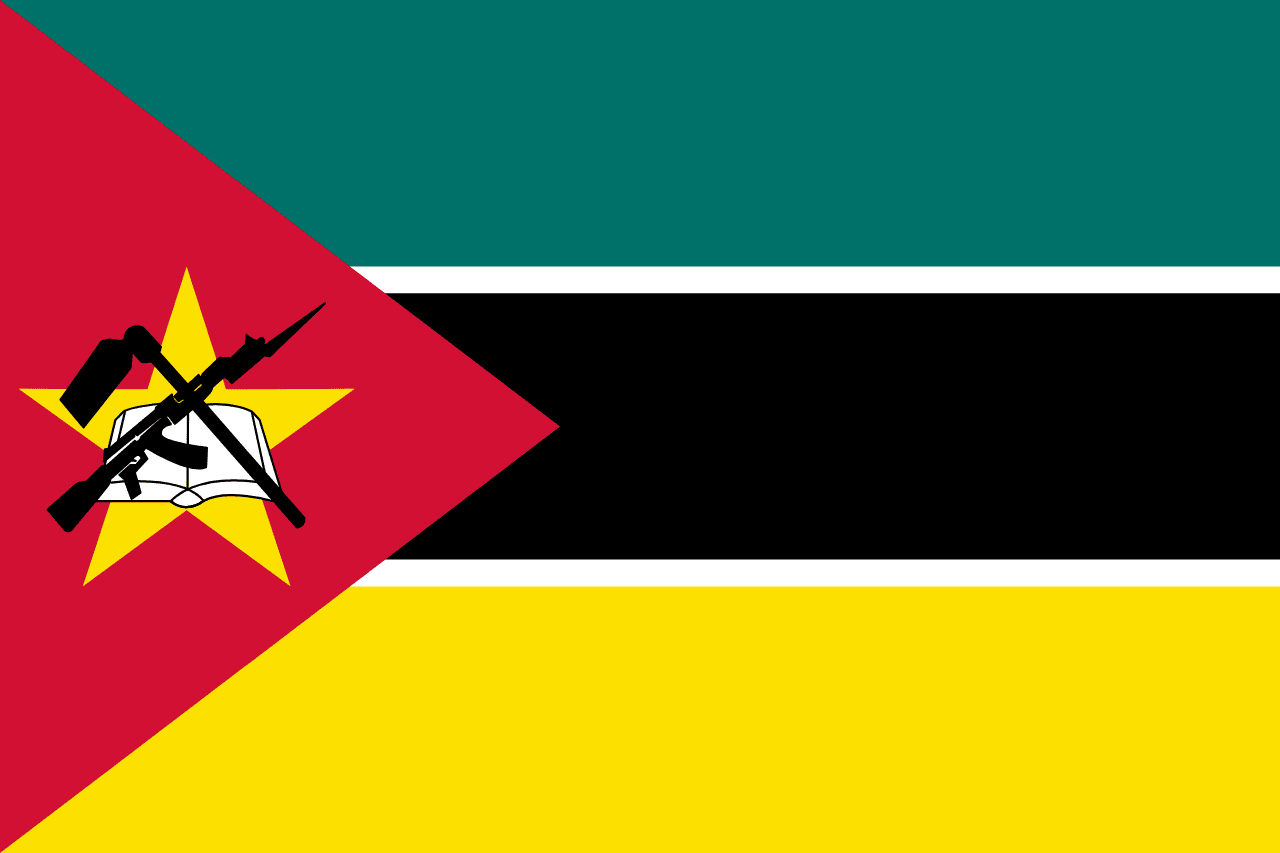The flag of Montenegro features a vibrant red field with a golden border and the country's coat of arms prominently displayed in the center. This striking design encapsulates Montenegro's rich history, royal heritage, and aspirations as a modern European nation.
Montenegro information
| National Flag Day | July 13 |
| Sovereign state | Yes |
| Official name | Montenegro |
| Capital | Podgorica |
| Population | 628,077 |
| Area | 13,812 km² |
| Currency | Euro (€) (EUR) |
| Language | Montenegrin, Serbian, Bosnian, Albanian, Croatian |
| Continent | Europe |
| Region | South Eastern Europe |
| Subregion | Balkan Peninsula |
| Borders | Croatia, Bosnia and Herzegovina, Serbia, Albania, Adriatic Sea |
| Timezone | Central European Time (CET) UTC+1 |
| Calling code | +382 |
| Top-level domain | .me |
History of the Montenegrin flag
 The current flag of Montenegro was officially adopted on July 13, 2004, by the Montenegrin legislature. However, its design is deeply rooted in the country's historical royal flags. The red field with gold borders was used by King Nikola I at the end of the 19th century. After Montenegro regained its independence in a 2006 referendum, ending its union with Serbia, this flag was retained as the national symbol, representing continuity with Montenegro's historical statehood.
Prior to 2004, Montenegro used various flags, including the tricolor flag similar to Serbia's during its time as part of Yugoslavia and later in union with Serbia. The return to the royal colors and imagery in the current flag marked a significant shift in Montenegro's national identity, emphasizing its distinct history and culture.
The current flag of Montenegro was officially adopted on July 13, 2004, by the Montenegrin legislature. However, its design is deeply rooted in the country's historical royal flags. The red field with gold borders was used by King Nikola I at the end of the 19th century. After Montenegro regained its independence in a 2006 referendum, ending its union with Serbia, this flag was retained as the national symbol, representing continuity with Montenegro's historical statehood.
Prior to 2004, Montenegro used various flags, including the tricolor flag similar to Serbia's during its time as part of Yugoslavia and later in union with Serbia. The return to the royal colors and imagery in the current flag marked a significant shift in Montenegro's national identity, emphasizing its distinct history and culture.
Symbolism and design of the Montenegrin flag
The Montenegrin flag is rich in symbolism, reflecting the country's history, values, and aspirations. The red field symbolizes the centuries of struggle for freedom and independence that Montenegro has undergone. It also represents the royal heritage of Montenegro, as red was the color of Montenegrin rulers for centuries. The golden border surrounding the flag adds a regal touch, emphasizing Montenegro's historical status as a kingdom and its proud traditions. This border also symbolizes Montenegro's sovereignty and its place among European nations. At the center of the flag is Montenegro's coat of arms, which is itself a complex symbol. It features a golden double-headed eagle, a symbol used by the Crnojević dynasty and later adopted by Petrović-Njegoš dynasty, representing the unity of church and state. The eagle holds a scepter in its right claw and an orb in its left, traditional symbols of royal power. On its breast is a shield depicting a golden lion passant on a green field, representing the power and courage of the Montenegrin people. Above the eagle is a golden crown, symbolizing Montenegro's historical monarchy and its sovereignty. The overall design of the coat of arms on the red field creates a powerful visual representation of Montenegro's identity, combining elements of its royal past with its aspirations as a modern state.
Usage and significance of the Montenegrin flag
 The flag of Montenegro is a source of national pride and is widely displayed throughout the country. It flies on government buildings, schools, and public institutions. During national holidays such as Statehood Day (July 13) and Independence Day (May 21), the flag takes center stage in celebrations and parades.
In international contexts, the flag represents Montenegro's sovereignty and unique identity. It is particularly visible during sporting events, where Montenegrin athletes compete under its colors. The flag's distinctive design helps to promote recognition of Montenegro on the global stage, important for a small country seeking to establish its presence in international affairs.
The flag serves as a unifying symbol for Montenegro's diverse population, which includes Montenegrins, Serbs, Bosniaks, Albanians, and other ethnic groups. Its imagery, rooted in Montenegrin history but forward-looking in its presentation, helps to foster a sense of shared national identity among all citizens.
The flag of Montenegro is a source of national pride and is widely displayed throughout the country. It flies on government buildings, schools, and public institutions. During national holidays such as Statehood Day (July 13) and Independence Day (May 21), the flag takes center stage in celebrations and parades.
In international contexts, the flag represents Montenegro's sovereignty and unique identity. It is particularly visible during sporting events, where Montenegrin athletes compete under its colors. The flag's distinctive design helps to promote recognition of Montenegro on the global stage, important for a small country seeking to establish its presence in international affairs.
The flag serves as a unifying symbol for Montenegro's diverse population, which includes Montenegrins, Serbs, Bosniaks, Albanians, and other ethnic groups. Its imagery, rooted in Montenegrin history but forward-looking in its presentation, helps to foster a sense of shared national identity among all citizens.
Interesting facts about the Montenegrin flag
- Montenegro's flag is one of the few national flags to feature a double-headed eagle, a symbol with roots in Byzantine heraldry.
- The shade of red used in the flag is specified as Pantone 186C, ensuring consistency in all official representations.
- The flag's design was controversial when first introduced, with some arguing for a return to the tricolor flag used during union with Serbia.
- In Montenegrin culture, the flag is sometimes referred to as "Alaj-barjak", a term derived from Turkish, reflecting the country's complex historical influences.
- The proportions of the Montenegrin flag are 1:2, making it longer than many other national flags and giving it a distinctive rectangular shape.





